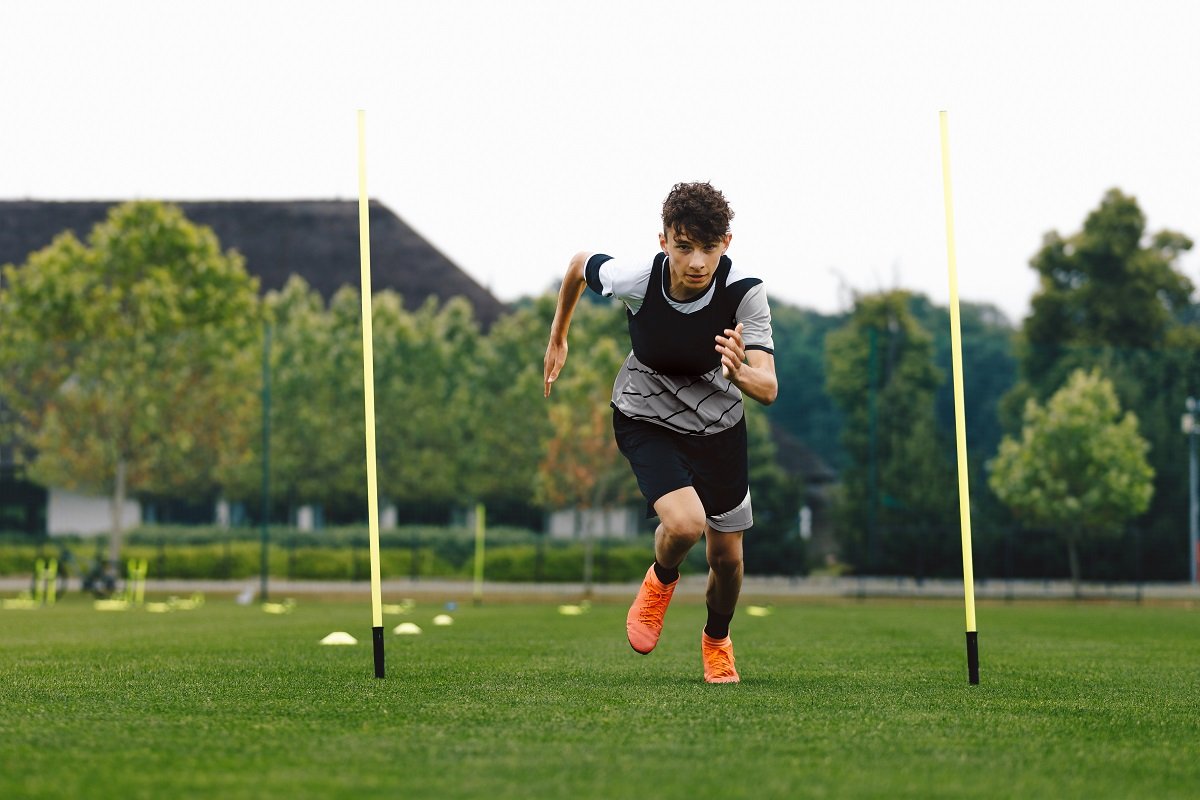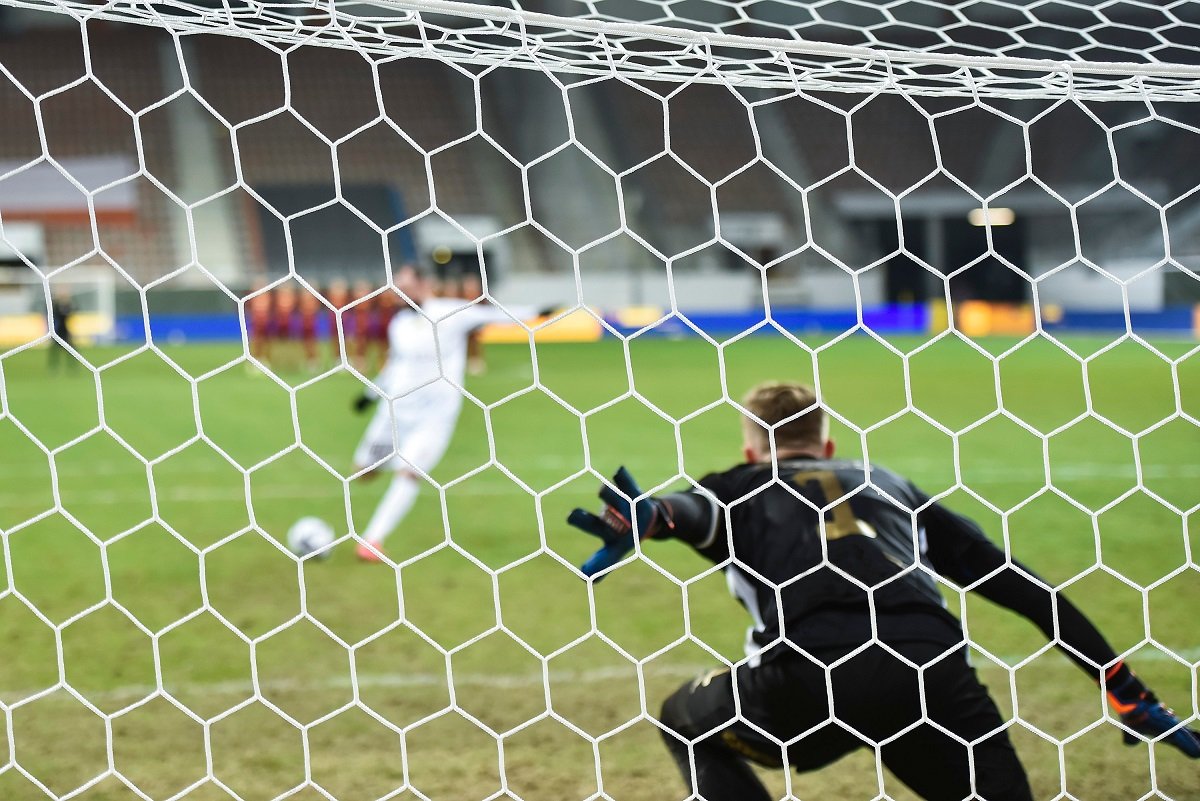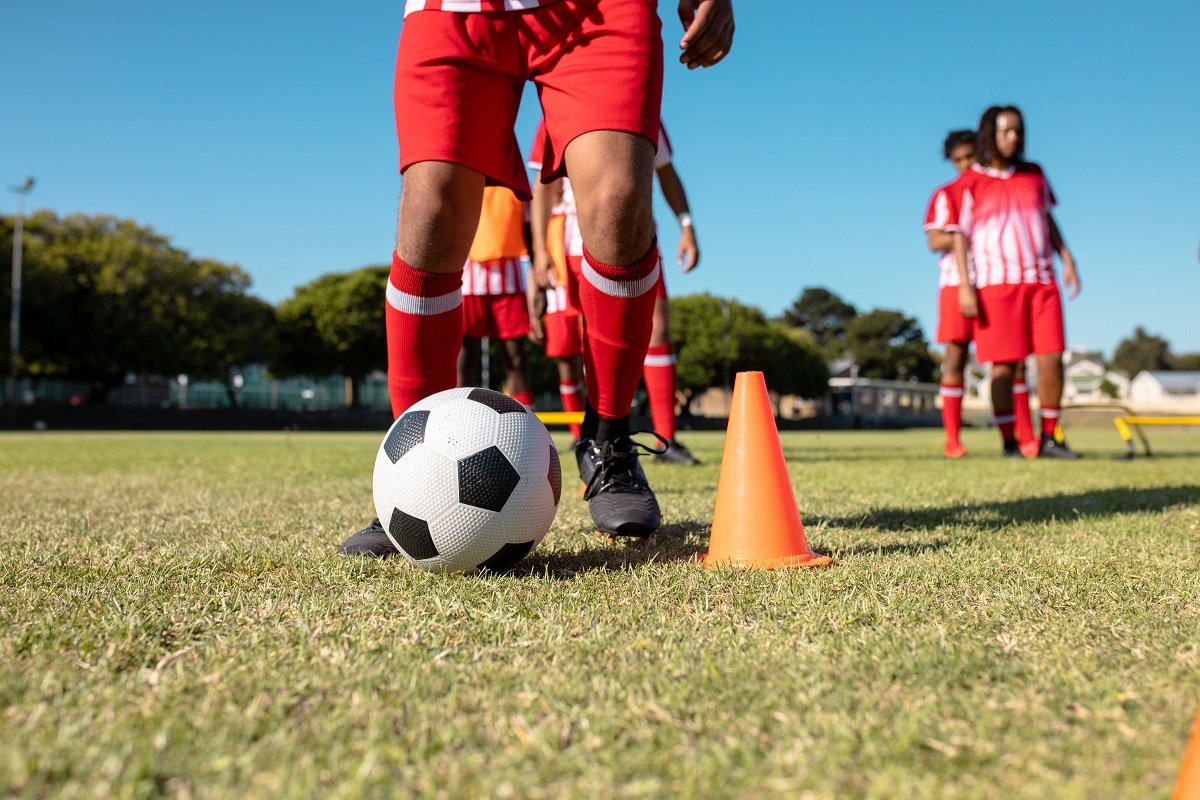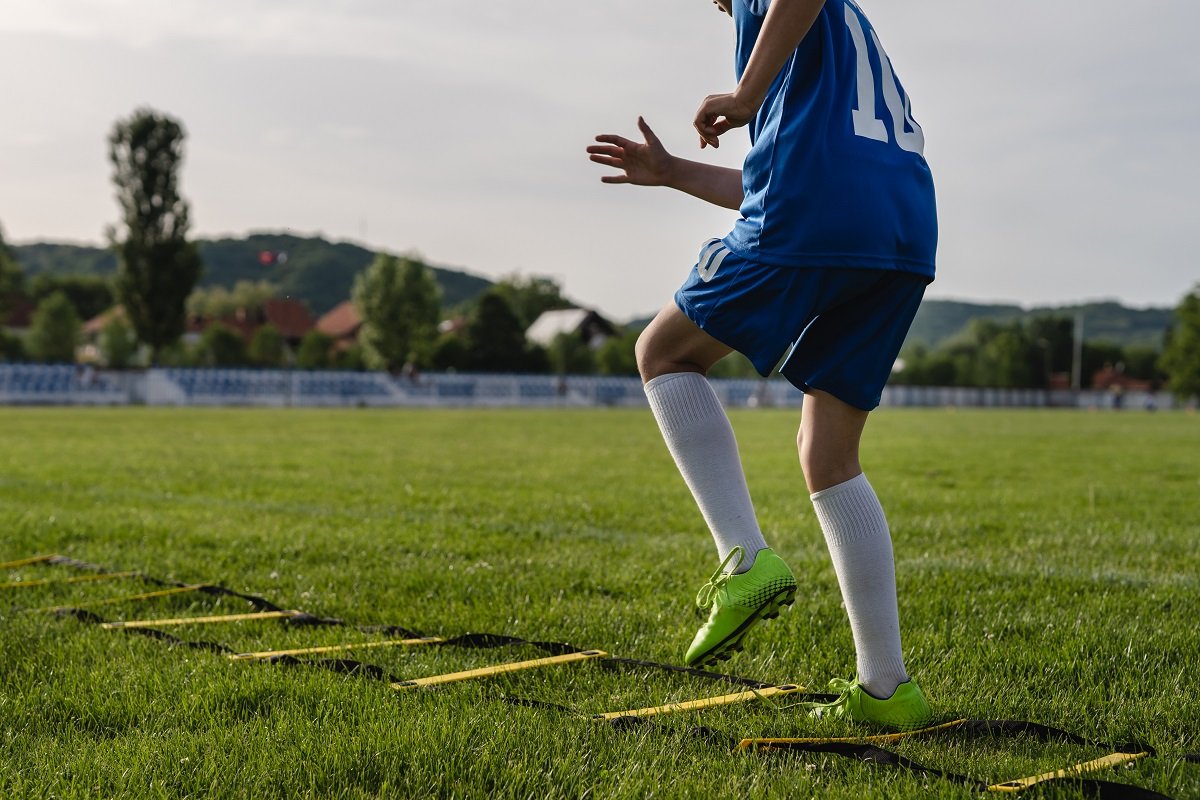
Football is a fast-paced sport where split-second decisions can determine success or failure, making reaction time a critical skill for players at all levels. A fast reaction time can make a difference in many areas of the game, such as scoring a goal, saving a shot, beating the offside trap, or making a goal-line clearance. This article explains why reaction is important in football and highlights exercises to help players improve.
Why reaction time is crucial in football

Reaction time is important for football players because it allows them to react quickly to external stimuli, such as key moments that occur in the game, making a difference between victory and defeat.
Key moments in football that require quick reactions
- Defensive actions: A quick reaction time helps block shots, intercept passes, make crucial clearances, and mark opponents.
- Goalkeeping: Fast reactions result in quick reflexes for saves and positioning adjustments.
- Attacking play: Reaction speed lets players respond quickly to defenders, time passes, and get into position for scoring.
- Transitions: Fast reactions allow players to respond quickly to counterattacks.
Benefits of improved reaction time in football
There are many benefits associated with an enhanced reaction time, helping players to take their game to the next level, for example:
- Enhanced game awareness and decision-making: Faster responses allow players to make better decisions in high-pressure situations.
- Increased defensive and offensive efficiency: Quick reactions can prevent goals, intercept passes, enable rapid counterattacks, or create goals.
- Reduced risk of injury: Faster reflexes can help players avoid potential collisions and tackles on the field.
How reaction time impacts performance
In summary, a good reaction time allows players to anticipate and respond to opponents’ movements, contributing to better defence, more efficient offensive play, and overall game intelligence. As a result, the importance of a fast reaction time for a football player can’t be overestimated.
Factors that influence reaction time
- Genetics vs. training: While some players naturally have faster reflexes, training can significantly enhance a person’s reaction time.
- Cognitive and physical factors: A player’s physical fitness, focus, and mental sharpness all contribute to reaction time.
- External Factors: External influences like fatigue, stress, and playing conditions (such as weather or noise) can impact a player’s response time.
How to improve reaction time in football
Do you want to improve your reaction time? Before we get into some specific exercises for enhancing your ability to react, here are a few pointers regarding warm-ups and mental training.
Warm-up drills for faster reflexes
- Reaction ball drills: Use a reaction ball that bounces unpredictably to enhance response time and coordination. Players must react quickly to catch or control the ball.
- Mirror drills with a partner: Stand facing a partner and mirror their movements, with or without a football. This builds responsiveness and enhances body awareness in all directions.
- Agility ladder drills: Step quickly through an agility football ladder with precise footwork. These drills boost foot speed and coordination, which is crucial for quick reactions on the field.
READ ALSO: The best football warm-up and cool-down exercises
Cognitive training and mental exercises
- Visualisation techniques: Players can visualise quick reactions, such as intercepting passes or positioning. This trains the brain to anticipate patterns, speeding up cognitive processing and making quick responses more instinctive.
- Pattern recognition drills: Pattern recognition improves decision-making speed by helping players anticipate the moves of opponents. For instance, when a coach calls a number representing a play, players react, building their ability to respond to in-game scenarios.
- Video analysis: Watching videos of previous games helps players anticipate moves and react faster in similar situations, strengthening decision-making speed and providing a mental edge on the pitch.
Exercises to sharpen reaction time for football

Lightboard reaction drill
Players stand before a lightboard and tap lights as they appear randomly. This exercise builds hand-eye coordination, cognitive processing, and quick reflexes. As a result, it’s the perfect drill for goalkeepers and defenders.
Ball drop drill
A coach or teammate drops a ball unexpectedly, and the player has to catch it as quickly as possible. A drill like this will help players enhance hand-eye coordination while improving reflexes and anticipation skills.
Cone touch drill
Football cones are placed in various positions around a player, who responds to a coach’s directional cues to touch each cone. This drill enhances footwork, body control, and quick directional changes.
Quick feet drills
Using an agility ladder, cones, or small football hurdles, players move their feet rapidly through patterns while maintaining control. This exercise improves foot speed, coordination, and reaction to in-game situations.
Partner passing reaction drill
Partners pass the ball back and forth, sometimes adding random timing or directional changes. This unpredictability helps players react quickly, maintain control, and make split-second decisions.
Rebounder reaction drill
Players can pass the ball against a football rebounder and react quickly to control the unpredictable return. This improves reflexes, ball control, and adaptability, which are essential for handling unexpected passes in games.
READ ALSO: The best football speed and agility drills
How to measure progress in reaction time training
It can be helpful to measure reaction times so that you can track any improvements that have been made since training began. Here are a few options for measuring progress:
- Timing reaction drills: Track the time taken to complete different reaction drills and note any improvements.
- On-field metrics: Coaches can determine how often players successfully intercept, react to loose balls, or make quick passes.
- Feedback from coaches: Coaches can provide in-game feedback and observations to determine a player’s improvements in responsiveness during matches.
The importance of reaction time in football
A quick reaction time impacts performance greatly. It can elevate a football player’s ability to perform crucial movements and decisive actions on the pitch. As a result, reaction time is one of the game’s most important attributes. Improving this skill takes dedication and consistency, but strides can undoubtedly be made with the proper training.
If you want to enhance your reaction time, take a look at the football training equipment available from Diamond Football. We supply products to every Premier League team, including ladders, cones, rebounders, and hurdles.





